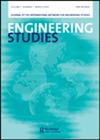创客空间的构成:刻板印象、自我效能和物理设计对女性与学术创客空间互动的影响
IF 1.3
3区 工程技术
Q2 EDUCATION, SCIENTIFIC DISCIPLINES
引用次数: 0
摘要
本文采用定性民族志研究方法来探讨高技能的性别制造者及其在他们的制造者空间中的作用。它探讨了影响创客空间的常见问题和性别在创客空间中的作用这两个研究主题,然后分析了它们对女性自我效能感的影响。与整体创客空间文化相关的各种因素导致了女性自我效能感的降低。在本作品所研究的创客空间中,一个女性刻板印象的工艺区被整合在更“传统”的创客空间设备中,影响了女性对空间的参与。创客空间中男性刻板印象区域的人体工程学和可达性问题更有可能对女性使用空间产生负面影响。我们讨论了创客空间中常见问题的潜在解决方案,并分享了建议,以创建一个更普遍可访问的创客空间,并更公平地传授体验式学习的好处。本文章由计算机程序翻译,如有差异,请以英文原文为准。
The Makeup of a Makerspace: The Impact of Stereotyping, Self-Efficacy, and Physical Design on Women’s Interactions with an Academic Makerspace
This article applies a qualitative ethnographic research approach to explore the perceptions of highly-skilled makers of gender and its role in their makerspace. It explores two research topics – common problems impacting makerspaces and the role of gender in makerspaces – and then analyses the results in the context of their impact on women’s sense of self-efficacy. Various factors relating to the overall makerspace culture contribute to women’s lowered sense of self-efficacy. In the makerspace under study in this work, a feminine-stereotyped Craft Area had been integrated among the more ‘traditional’ makerspace equipment, affecting women’s participation in the space. Ergonomic and accessibility problems in the masculine-stereotyped areas of the makerspace were more likely to negatively impact women’s use of the space. We discuss potential solutions to common problems in the makerspace and share recommendations to create a more universally accessible makerspace and impart the benefits of experiential learning more equitably.
求助全文
通过发布文献求助,成功后即可免费获取论文全文。
去求助
来源期刊

Engineering Studies
ENGINEERING, MULTIDISCIPLINARY-HISTORY & PHILOSOPHY OF SCIENCE
CiteScore
3.60
自引率
17.60%
发文量
12
审稿时长
>12 weeks
期刊介绍:
Engineering Studies is an interdisciplinary, international journal devoted to the scholarly study of engineers and engineering. Its mission is threefold:
1. to advance critical analysis in historical, social, cultural, political, philosophical, rhetorical, and organizational studies of engineers and engineering;
2. to help build and serve diverse communities of researchers interested in engineering studies;
3. to link scholarly work in engineering studies with broader discussions and debates about engineering education, research, practice, policy, and representation.
The editors of Engineering Studies are interested in papers that consider the following questions:
• How does this paper enhance critical understanding of engineers or engineering?
• What are the relationships among the technical and nontechnical dimensions of engineering practices, and how do these relationships change over time and from place to place?
 求助内容:
求助内容: 应助结果提醒方式:
应助结果提醒方式:


